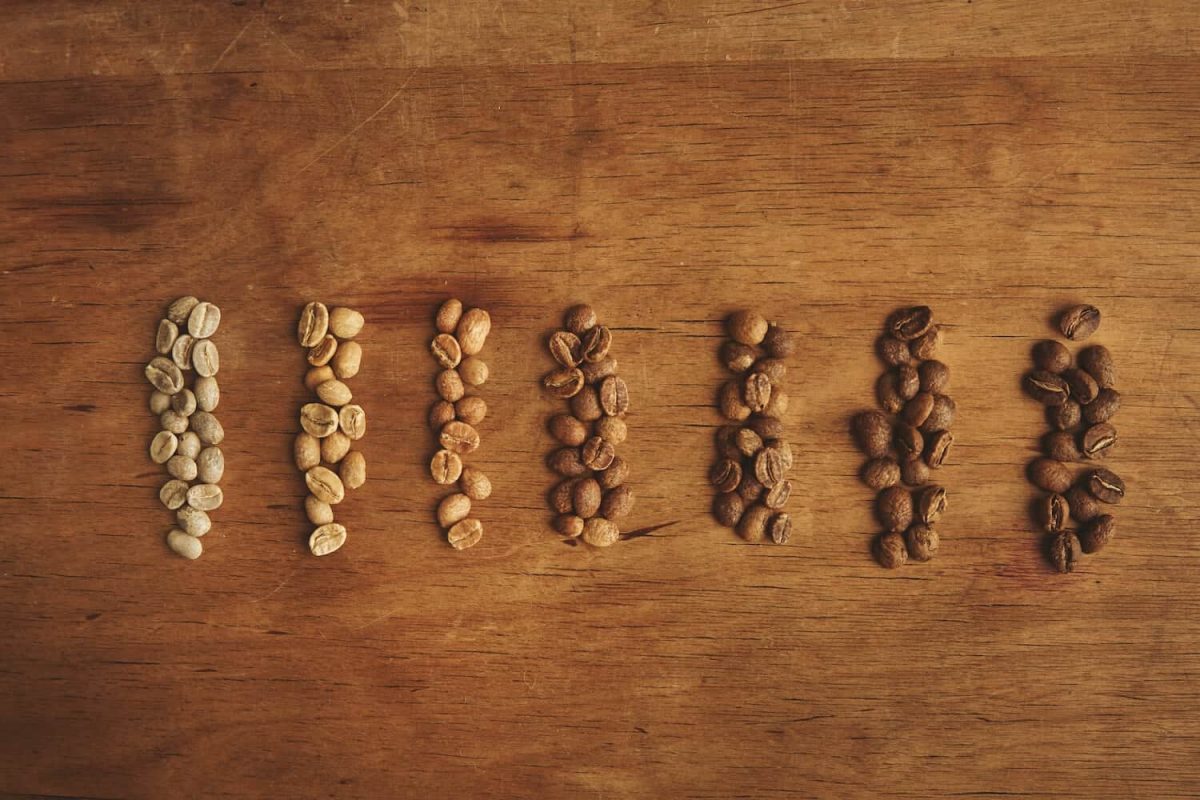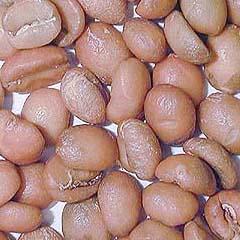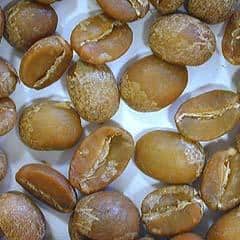What is White Coffee?

How do you like your coffee?
Some would answer, “I like it black”. However, there is a new trend in town: White Coffee.
What is White Coffee? That is the first question that came to my mind when I heard about it. So, I just had to investigate and learn more.
I have been producing Arabica coffee in Panama for a number of years. We roast our own coffee and take great care not to go too dark or too light. So when I heard about “under roasted” coffee I have to admit, it aroused my curiosity.
In this article, we will not be talking about “Flat White Coffee” which is a specific brewing method. Nor will be talking about “Malaysian Ipoh White Coffee”, which has its own roasting protocols. In this article we will be talking about “under roasted coffee” alias “white coffee”.
Together we will find out how it came about, how it is roasted and how it is usually prepared.
Where Did White Coffee Come From?
The Specialty Coffee industry is in constant flux. The need to stand out to sell your product can be very challenging. Fantastic little coffee shops keep multiplying. We then witnessed a growing number of micro-roasters and small batch roasting.
Incredible coffee from all over the globe is offered to the consumer. Indeed the consumer is in an envious position as all these coffee entrepreneurs want YOU to buy THEIR coffee.
Dark roast used to be the rage, then the shift came and people were leaving the “dark side”, preferring a City Roast (medium). The present trend is for people to go lighter. The question is, how light is too light? We should not be surprised that under roasted coffee has hit the scene. It was probably just a matter of time. The questions now are; why is it white and how do you make it?
It’s In The (Un) Roast
What is “under roasted coffee”? To answer that correctly, one needs to understand a little bit about the roast itself. Typical roasting is commonly divided into four different stages. The first stage is called the “endothermic stage”. This is where the bean dries out.
The second stage is “first crack”. This is where the chemical compounds begin to react. There is a cracking sound within the bean and it doubles in size. This is followed by another brief “endothermic stage which is followed by the second crack. This cracking sound is faster and higher pitched than the previous one. The beans change colour rapidly at this time.
A green bean looks green due to the water content in the grain. The grain changes color to a whitish – yellow as it loses water content. It is at this time (endothermic stage) that the grain is expelled from the roaster providing us with “white coffee”. Each company would decide at which point to finish the roast.


Okay, Now What Do We Do With It?
The easiest thing to do is order it at a coffee shop that prepares it for you. Then you just have to drink it. However, if you are determined to make it at home you can purchase it at certain coffee shops that offer it.
They only sell “ground” white coffee. That is a kindness as the beans are still too crude and extremely dense. It would most definitely wreak havoc on your home grinder. The grinds are also set for espresso machines.
For sure, espresso seems like the most practical way to prepare it. Espresso machines push the water through at just the right temperature under the right amount of pressure to extract as much flavor as possible. That is what you want and need.
It is probable that the machine will not extract as much flavor as desired. Depending on the machine, grind and procedure used the water may run through too quickly. What can you do in this case? Run it through again. That is anathema for most baristas with normal coffee, but this is a whole different drink.
Is It For You?
There is no way to answer that question without trying it. You must understand, that it cannot and will not taste like coffee as you know it. Lightly roasted coffee tends to have “nutty” flavor notes. This seems to be a common consensus with those who drink white coffee and not a surprise.
Each person will probably arrive at his own conclusions on the subject of taste and aroma. Try it for yourself. Invent different recipes and have fun with it. It just may be the perfect drink you have been waiting for.
Worried About Too Much Caffeine Worse Yet, Not Enough?
The hype for white coffee is that it has more caffeine than any other. I haven’t seen any studies on that subject confirming if that is true or not. This day and age with caffeine booster power drinks it stands to reason why that would be attractive. Things are not always as they seem.
For instance, an espresso based drink although potent in flavor has less caffeine than the same coffee made in a drip machine or French Press. With white coffee the main indicator of caffeine levels will largely depend on the type or variety of bean the roaster is using for his white coffee.
Robusta coffee has more caffeine than the majority of arabicas. Varieties of arabicas also have a say on caffeine levels.
Does the lighter roast make much difference? Not really, studies have shown that caffeine levels only drop about 5.4% in darker roasts from lighter roasts. Once again adding credence to the main component of a high caffeine fix…. the type of coffee being roasted.
What About Bitterness?
That is a mixed bag, too. Those who advocate white coffee will compare it to dark roasted beans which are bitterer. However, medium roasted beans can be very mild and sweet. There are so many factors involved in this subject it is hard to get a real handle on it.
The alkaloid trigonelline is found in all coffees. This is quite bitter especially in under roasted coffee. Its bitterness degenerates as the roast goes on. For this reason some will argue that white coffee tastes bitterer than medium roasts.
Due to harvesting practices, lower grade coffees can be very bitter also. If the beans are not fully mature when harvested it will increase the bitterness and negative acidity in the bean. However, most if not all high end coffee shops never receive beans of this grade, so it is not a perceivable problem.
After All Is Said And Done
We learned a lot together, didn’t we? White Coffee is a fad, a brilliant way to promote sales for some very clever minded micro roasters who know how to think outside the box. Will it last? Only time will tell.
The coffee industry is not idle. As long as people are willing to try new things related to coffee, new ideas and methods will be popping up. So until then, enjoy your favorite beverage any way you want, dark, medium and yes, even white.